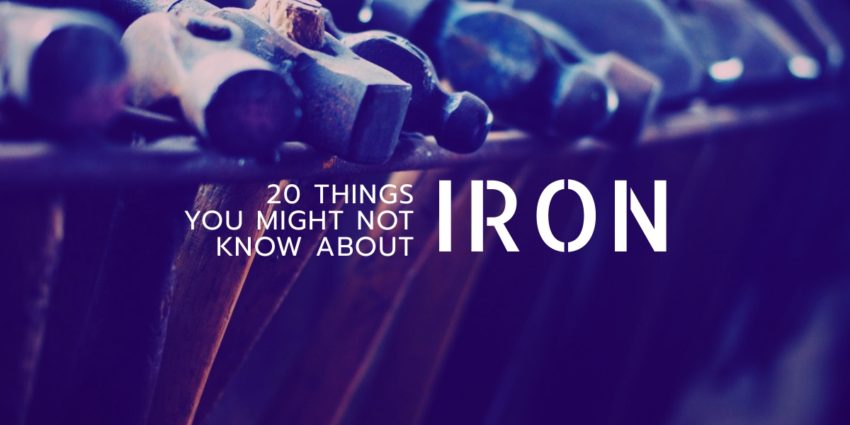For all time Iron has been an essential element of life without which we would, literally, not be alive. Beyond biological needs, though, Iron has played a massive role in human history for about 5000 years, or since the times of the Ancient Egyptians. For the Egyptians, Iron from meteorites was all the rage. You knew you were awesome when you had meteoric iron jewelry! During the Iron Age uses and demand for Iron exploded as Iron Ore began to be mined and smelted. Warfare was taken to a new level, Iron production was spread via conquest, and the rest is, as they say, “history.”
It’s entirely possible, though, that Iron is even more important than you think.
Did you know?
- Iron is by mass the most common element on Earth, forming much of Earth’s outer and inner core.
- Pure iron is relatively soft, but is unobtainable by smelting because it is significantly hardened and strengthened by impurities, in particular carbon, from the smelting process.
- Among iron’s organometallic compounds is ferrocene, the first sandwich compound discovered.
- A human male of average height has about 4 grams of iron in his body.
- Iron, cobalt, and nickel are sometimes grouped together as the iron triad.
- The source of iron’s chemical symbol Fe is the Latin word ferrum
- Beads made from meteoric iron in 3500 BCE or earlier were found in Gerzah, Egypt by G. A. Wainwright.
- A dagger made of meteoric iron was found in the tomb of Tutankhamun
- The first iron production started in the Middle Bronze Age but it took several centuries before iron displaced bronze.
- The Hittites (circa 1600 BCE) appear to be the first to understand the production of iron from its ores and regard it highly in their society.
- Iron working was introduced to Greece in the late 11th century BCE, from which it spread quickly throughout Europe.
- During the Industrial Revolution in Britain, Henry Cort began refining iron from pig iron to wrought iron (or bar iron) using innovative production systems.
- Pig iron is not pure iron, but has 4–5% carbon dissolved in it with small amounts of other impurities like sulfur, magnesium, phosphorus and manganese.
- Iron is the most widely used of all the metals, accounting for over 90% of worldwide metal production.
- Iron is the most important transition metal in all living organisms.
- Humans need 10–18 milligrams of iron each day.
- During the Iron Age, some iron ore used for swords contained vanadium, producing so-called Damascene steel.
- The first person to explain the various types of iron was René Antoine Ferchault de Réaumur who wrote a book on the subject in 1722.
- The top three global iron ore producers are China, Australia, and Brazil.
- The world’s top iron ore producer is Brazil-based Vale.
